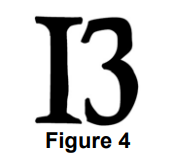Describe one result from Gilchrist and Nesberg’s study into the effects of motivation on perception.
Did this page help you?
Exam code: 8182
Describe one result from Gilchrist and Nesberg’s study into the effects of motivation on perception.
How did you do?
Did this page help you?
Outline one strength and one weakness of Gilchrist and Nesberg’s study into the effects of motivation on perception.
How did you do?
Did this page help you?
Read the following article.
In a study investigating perceptual set, 40 participants were asked to place their hand in a bucket of water for 10 seconds whilst listening to music. The temperature of the water was the same for each participant. They were asked to give a number between 1 and 50 to report how warm they thought the water was. A score of 1 meant the water felt extremely cold. A score of 50 meant that the water felt extremely hot. There were two conditions of the experiment. All participants completed both conditions. In Condition A, participants listened to a famous song that is associated with winter and Christmas. In Condition B, participants listened to a famous song that is associated with summer and the sunshine. |
Table 1 shows the frequency of reported temperature scores for Condition A. One of the scores is missing.
Table 1
Reported temperature score | Frequency |
|---|---|
1–5 | 6 |
6–10 | |
11–15 | 16 |
16–20 | 1 |
21–25 | 2 |
26–30 | 0 |
31–35 | 2 |
36–40 | 1 |
41–45 | 0 |
46–50 | 1 |
The researcher found that participants in Condition B reported the water felt warmer than participants in Condition A.
Using your knowledge of ‘perceptual set’, outline one conclusion that the researcher could make from these findings.
How did you do?
Did this page help you?
Bruner and Minturn investigated the effect of expectation on perception.
Describe Bruner and Minturn’s study.
How did you do?
Did this page help you?
Read the item and then answer the questions that follow.
 A researcher conducted a study into perception. In condition A, participants were shown a series of letters. Then they were asked to identify the image shown in Figure 4. In condition B, participants were shown a series of numbers. Then they were also asked to identify the image shown in Figure 4. The researcher recorded whether the image was identified as a number or a letter. |
Table 1: The percentage of participants who identified the image as a number or a letter
Condition A | Condition B | |
|---|---|---|
Image identified as a number | 27% | 82% |
Image identified as a letter | 73% | 18% |
Use your knowledge of factors affecting perception to draw a conclusion from the results shown in Table 1.
Explain your answer.
How did you do?
Did this page help you?